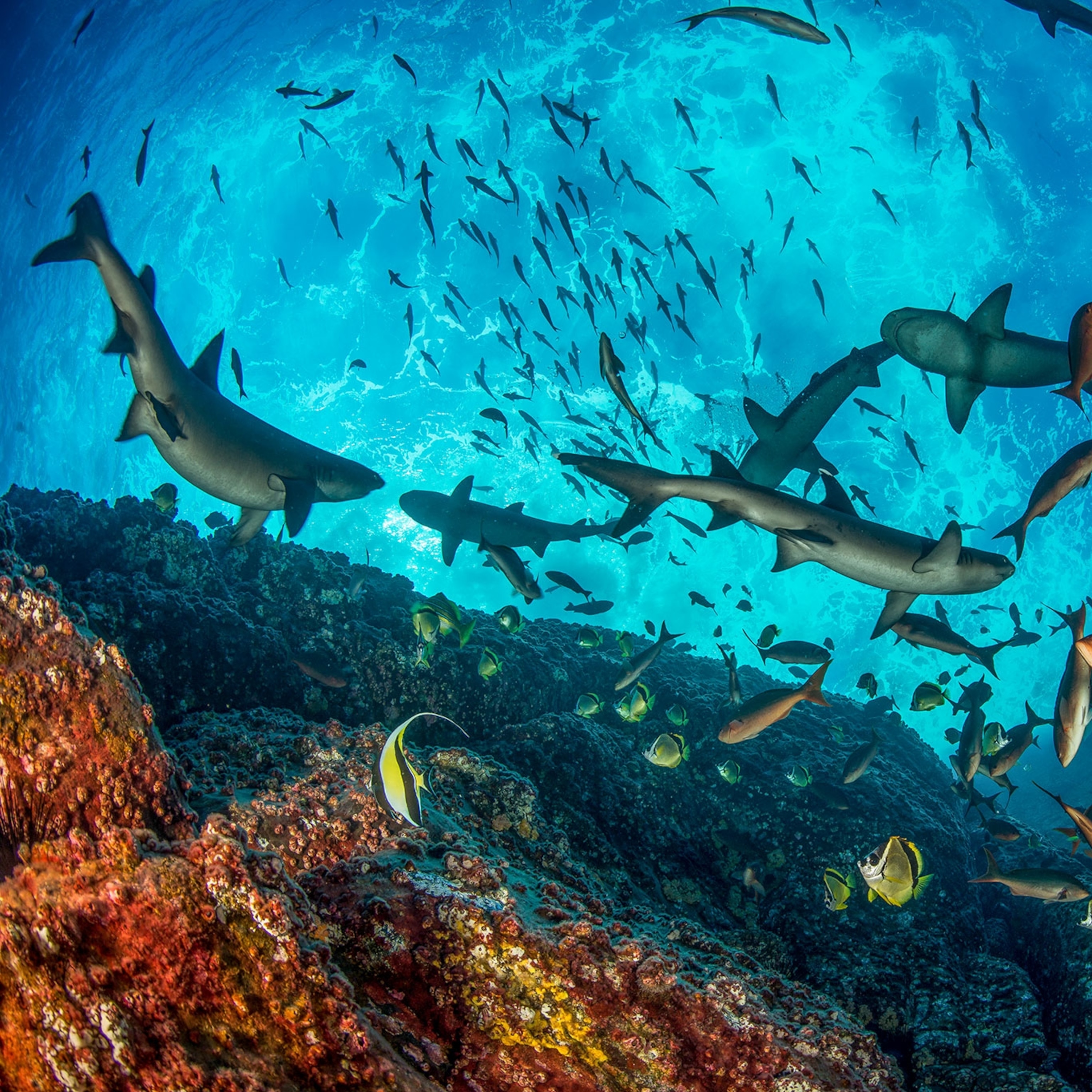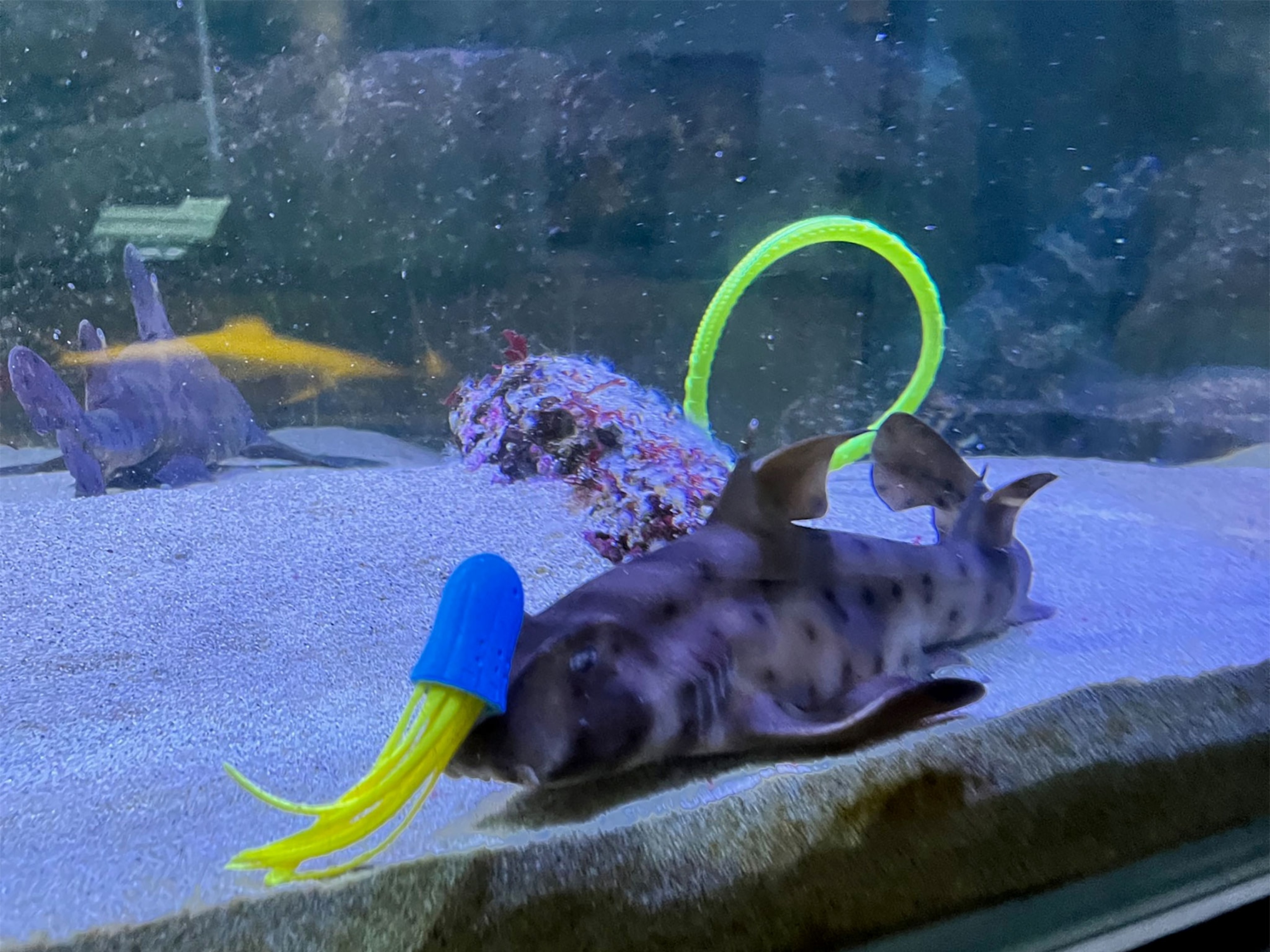These Sharks Thrive Inside an Underwater Volcano
Scientists bring robots to the "Sharkcano" to better understand the harsh, mysterious place.
“Sharkcano.” It’s not the title of some campy summer blockbuster, but rather a real-world phenomenon that went viral in 2015, when scientists on a National Geographic expedition found sharks living inside one of the most active underwater volcanoes on Earth. Not surprisingly, the team was eager to go back and learn more, but how do you explore an environment that could easily kill you? You send in robots, of course.
“Our goal is to send instrumentation there to get meaningful data, but sometimes it’s really fun to just blow stuff up,” says National Geographic explorer and ocean engineer Brennan Phillips.
Phillips reunited with his 2015 expedition mates—Alistair Grinham of University of Queensland and Matthew Dunbabin of Queensland University of Technology and Director of GFB Robotics—to once again venture about 20 miles off the coast of the Solomon Islands to the Pacific Ocean’s violent Kavachi volcano.
We talked to Phillips and Dunbabin about their return to “Sharkcano.”
Why send robots into one of the most active submarine volcanoes on Earth?
Brenna Phillips: Cause it's cool. But also, as a scientist, it's about getting that last data point, right before the eruption—pH, carbon dioxide, temperature fluctuations, acidity. If you can do this at this one volcano, you can do it at every volcano.
Matthew Dunbabin: After looking at a friend’s amazing video of Kavachi’s past eruptions, hearing about the remoteness of the site, and how challenging the conditions are, we were determined to try to get there. This all addresses an interesting problem with monitoring in extreme environments, in that no matter how well-built your systems are or how much they cost, it is very unlikely they will survive an explosion. So, to start increasing our knowledge of these environments you have to develop low-cost monitoring tools that are capable of undertaking meaningful measurements but are not so costly you can’t afford to lose them.
How did you design the robots?
MD: Kavachi is in a remote part of the Solomon Islands with very limited travel options. So you have to design robots that fit into carry-on luggage on a Twin Otter plane. Also, these robots are considered disposable. Therefore, we are making them as low cost as possible—hundreds of dollars.
BP: In this case we used some used PVC sewer pipe that was found in the village. You just put some electronics onto that and wham-o, you have an autonomous boat.
MD: I like to call it bush robotics.
What kind of instruments do the robots have and what can they measure?
MD: The smaller robots have acoustic depth sounders for gathering bathymetry of the vent region, surface water temperature sensors, accelerometers, and cameras. The larger robots carry greenhouse gas monitoring sensors and measure direct gas release to the atmosphere as well as physical air samples. We also have simple drifting robots that are capable of collecting water samples.
Is this part of a wider movement in robotics?
BP: We're in the midst of a robotic renaissance right now. The door is open for many people to make cheap robots, whether they fly, swim, or drive. We're seeing great video and data from things that scientists haven't been able to do before. It's really exciting to be part of that.
What did you learn from sending the robots into Kavachi?
MD: In the vicinity of the vent we found a huge drop in the surface pH levels, water temperatures ten degrees higher than normal, and we learned Kavachi is a strong greenhouse gas emitter. One unexpected result was the eruption forced fresh material from the vent to be embedded into the robot itself. This means we have a unique way of collecting physical rock samples.
These learnings are now driving the development of new experiments for the next trip, such as trying to quantify the shockwaves close to the vent to understand the tolerance of the pelagic fish and sharks that are living around this volcano. Also we are designing landers to travel to the vent and drop sensors directly into it.
How did it feel to discover sharks inside a volcano?
BP: Well, to put my scientist hat on there are a number of reasons why there shouldn't be anything living in there except maybe bacteria. Number one it's very hot and acidic, and we measured that. Number two, it's very turbid, so the water is very cloudy. None of these things are good for fish. Whether they're good for sharks, that's up for debate. Yet we saw sharks that in between eruptions are darting in and out between the clouds of the plume. So that's a lingering question mark.
After the “sharkano” video got out, I got contacted by a lot of shark scientists and everybody's like "we need to tag a shark, let's do it!” The story is not over. For better or worse we gotta go back.
What does it feel like being that close to one of the most active underwater volcanoes in the world?
BP: The boat is literally vibrating, which you especially feel in your chest. It feels like a crack of thunder has just gone off right next to you and underneath you. I felt relief to head home and be in one piece. I thought: "Yes that was a great day, that was awesome, now let's get away from that."
This interview has been edited for length and content.








